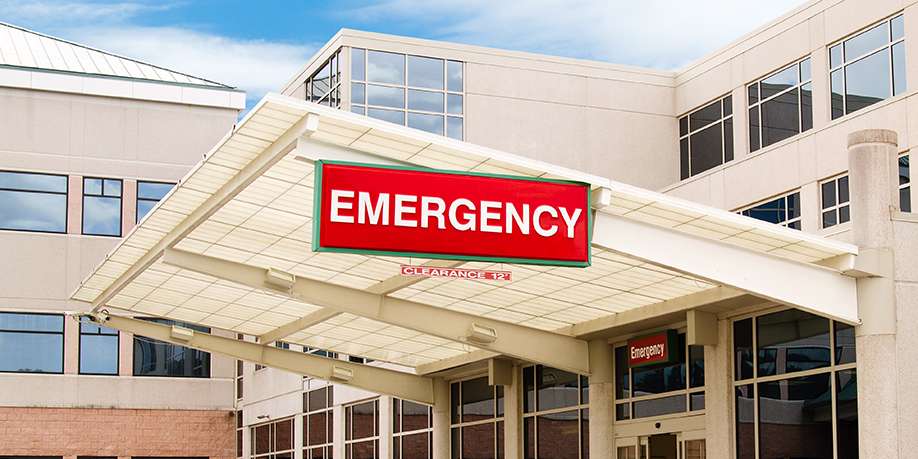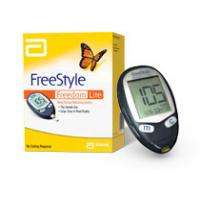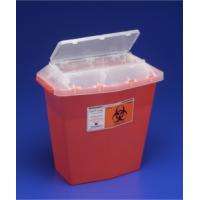
Diabetic Emergencies - What They Are, What to Do, and When to Call an AmbulanceDiabetic Emergencies - What They Are, What to Do, and When to Call an Ambulance
  © Robhainer | Dreamstime.com Diabetes is a sneaky disease that is not that easy to manage. Even mild symptoms can sometimes turn into real emergency really quickly. That happens when blood glucose levels become either too low or too high. Ideally, you’d better do anything you can to avoid finding yourself in such situation, but if that happens, you or people accompanying you would better know what to do. In some cases, people with diabetes are unable to help themselves in an emergency situation, so people around them must step in to save their life. If you know or take care of someone with diabetes, talk to them about what to do in a critical situation. The key is to act quickly when necessary and to do that you need to know how to recognize when the storm is coming. Below we describe the situations when there is no time to wait. Diabetic Ketoacidosis DKA (Diabetic Ketoacidosis) is one of the emergency situations that require immediate actions. It occurs when a person with diabetes doesn’t have a sufficient amount of insulin, which triggers the liver to start breaking fat into ketones to produce energy. This process may happen too fast for the person’s body to handle. Ketones are toxic to the body and when they build up too much, they can alter the blood chemistry and poison the person, which may lead to coma. Although people with type-1 diabetes are those more prone to diabetic ketoacidosis, people with type-2 and gestational diabetes also have a risk of experiencing it. The most common causes of diabetic ketoacidosis are not getting enough food, experiencing low blood sugar while sleeping, and not receiving a sufficient does of insulin or requiring more insulin than is usually needed. Diabetic ketoacidosis can be triggered by an infection, medications, serious stress, or heart attack. Early symptoms of DKA are dry mouth, extreme thirst, and a need to pee more often than usual. More serious symptoms include fruity breath, flushed skin, trouble breathing, being constantly tired, feeling dizzy, nausea, vomiting stomach pain, and passing out. If you or someone you know has such symptoms, you or they need to take urine test for ketones and if the ketones are high, call the doctor without delay. If the symptoms are severe, immediate medical attention is most likely required, so don’t hesitate to call an ambulance or go to the emergency room. Hypoglycemia Hypoglycemia (also called “insulin shock”) is another potential emergency situation that a person with diabetes may experience. It is a low blood sugar situation that may occur when a person takes more insulin than needed. Similarly to diabetic ketoacidosis, hypoglycemia is also more common in people with type-1 diabetes, although type-2 diabetes patients, who take insulin and other blood sugar control medications, can experience it as well. Hypoglycemia can happen when you take too much insulin, skip a meal, consume alcohol, or exercise more than you usually do. Fortunately, most people with diabetes are capable of catching hypoglycemia early enough by such symptoms as hunger or shakiness, and can take measures in a timely manner. Those, who have hypoglycemia unawareness (mostly people who have had diabetes for a long time) do not experience early symptoms and as a result, can get severe symptoms without any warning signs. Severe hypoglycemia is very dangerous. Its symptoms may include blurred vision, seizures, confusion, loss of consciousness, and diabetic coma. To reduce the risk of experiencing severe hypoglycemia, listen to your body and try to catch how going low in blood sugar feels and check the blood sugar every time you suspect that happening. If your determine that your blood sugar level is low, follow this simple 15-15 rule: Eat 15g of fast-acting carbs (3-4 glucose gels or tablets, drink 4 Oz of soda or fruit juice, or eat a tablespoon of regular sugar or honey. Then wait 15 minutes and test your blood sugar again. If you still don’t get satisfactory results or don’t start feeling better, consume some more carbohydrates and repeat the blood sugar test. If you witness somebody passing out as a result of Hypoglycemia, call the ambulance right away. While waiting for help, you can administer a glucagon shot if you know exactly how to do it to bring the person’s blood sugar to a safer level and bring the person back to consciousness (it can take about 15 minutes from the moment the shot was administered). Once the person is awake and can drink, give them some fruit juice or soda if available. Preeclampsia Preeclampsia is another dangerous condition that may affect pregnant women with gestational diabetes, as well as with type-1 and type-2 diabetes. This condition, which is high blood pressure, can put the mother’s and the baby’s health in serious danger. If such condition occurs, the baby may need to be delivered even if it’s not the time yet. Delivery doesn’t guarantee curing the condition. Moreover, the condition can even occur for the first time after the delivery. The danger to this condition adds the fact that women often don’t feel it at all or think that feeling unwell is normal for a pregnant woman until more serious symptoms occur such as blurred vision, sensitivity to light, seeing light spots, persistent headache, severe swelling of the hands, feet, and face, pain in the right shoulder or under the right ribs, vomiting during the late stages of pregnancy, shortness of breath, anxiety, and gaining over 2 lbs. a week. If any of such symptoms occur, seek medical care right away. Hyperosmolar Hyperglycemic Syndrome This very high blood sugar condition (more than 600 mg/dL, with very few or no ketones) is a type-2 diabetes complication. Although it is not the most common one, Hyperosmolar Hyperglycemic Syndrome (HHS) is still very dangerous and can cause seizures and coma. It can be lethal as well. HHS usually occurs in senior people and obese pregnant women, who suffer from uncontrolled diabetes. The condition is often triggered by an infection or illness and may happen when your blood sugar levels keep being too high for a long period of time. When that happens, the body tries to get rid of excess sugar through urine. As a result, the person pees more often and, if not hydrated enough, the person can develop life-threatening dehydration. The symptoms of HHS may include peeing often, dark urine color, fast heart rate, dry mouth, cold hands and feet, nausea, vomiting, warm skin without sweat, stomachache, confusion, fever above 101F, slurred speech, and hallucinations. If any of such symptoms occur, the person should urgently get medical help.
| |||||||||||||||||||||||||




























